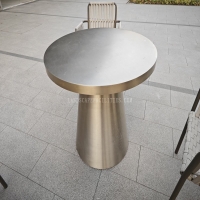Welcome to the website for landscape facilities products and knowledge.
What are the fire safety considerations for landscape bar counters, especially those with integrated cooking features?
Integrating cooking features into landscape bar counters creates fantastic outdoor entertainment spaces but introduces significant fire risks that require careful mitigation. Proper planning and adherence to safety codes are paramount for preventing dangerous situations.
The primary consideration involves compliance with local building codes and the National Fire Protection Association (NFPA) guidelines, particularly NFPA 58 for propane grills and NFPA 96 for ventilation. The cooking appliance itself—whether a built-in grill, flat-top, or pizza oven—must be UL-listed for outdoor use and installed with non-combustible clearance zones. Maintain a minimum of 24 inches of clearance on all sides of the cooking unit from any combustible materials, including wooden overhead pergolas, siding, or decorative vegetation.
A Class K fire extinguisher rated for kitchen fires involving grease and cooking oils must be mounted within easy reach, no more than 30 feet away. For larger installations, an integrated automatic suppression system under the hood is highly recommended. These systems can automatically release a wet chemical agent to smother flames.
Material selection is critical. The counter structure surrounding the cooking module should be built from non-combustible materials like concrete, stone, tile, or metal. Avoid using flammable plastics or untreated wood in the immediate vicinity. Proper ventilation is another key factor; ensure adequate overhead clearance and consider an externally vented hood to dissipate heat, smoke, and grease-laden vapors away from guests.
Electrical safety is equally important. All outdoor outlets must be GFCI-protected and installed a safe distance from the heat source and any potential water splash zones from the bar area. Gas lines for propane or natural gas grills must be installed by a licensed professional and include an accessible shut-off valve.
Finally, establish clear operational protocols. Never leave cooking unattended, keep a lid nearby to smother grease fires, and ensure all users are briefed on the location and operation of the fire extinguisher. Regular maintenance, including cleaning grease traps and checking gas lines for leaks, completes a comprehensive fire safety strategy for a beautiful and safe outdoor living space.
Related search:

Recommendation
Outdoor Metal Table - Classic Outdoor Furniture, Stainless Steel Table, Durable and Reliable